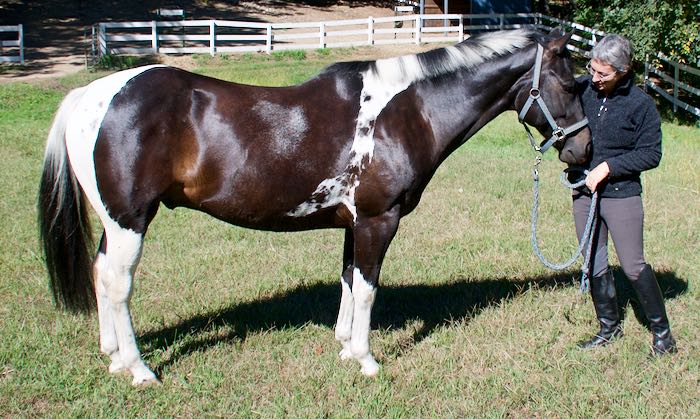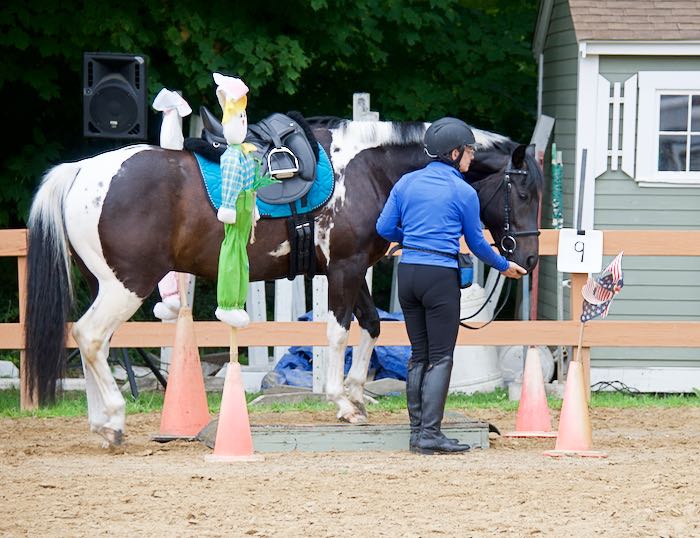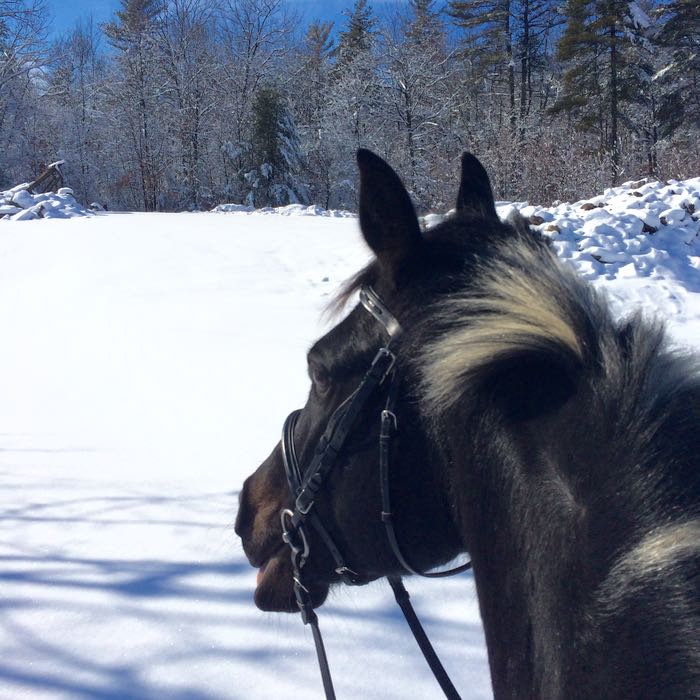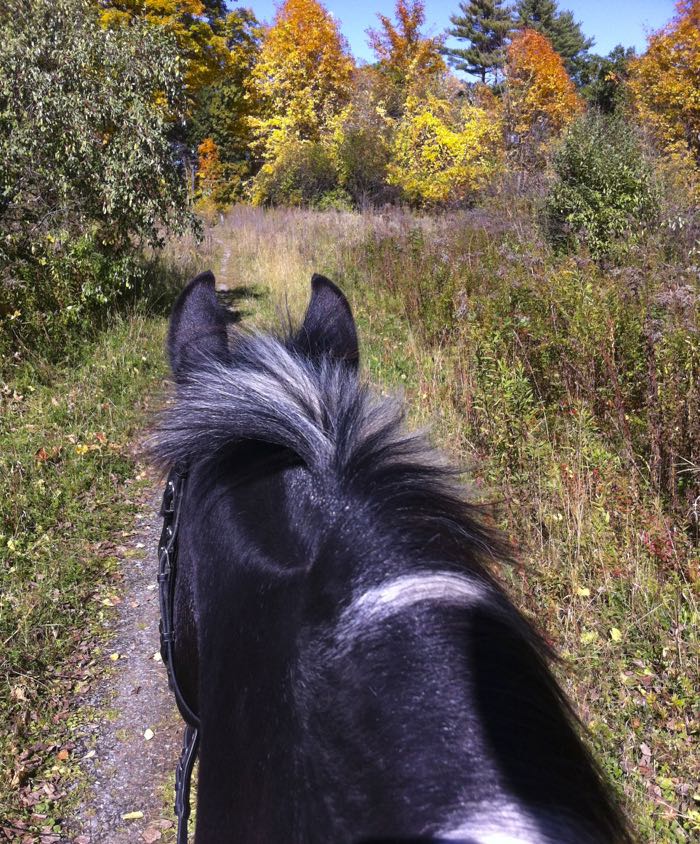Today is Tonk’s birthday. He’s ten. Although I think he looks awesome, he’s not yet in his prime.
The horse’s skeletal structure doesn’t fully mature until they’re five or six years old. Many horses are started under saddle around the age of three, and racehorses are galloping on tracks by the age of two. This is common, but not good for the horse’s longterm health. Some young horses aren’t ridden, but they’re kept in close quarters and don’t have the room to move and develop properly. Luckily for Tonk, he lived in a large field until he was four, then backed, and ridden lightly during those final two years of his growth phase. This is good, because I want him to last a long time.
We have a lot to do.
I bought Tonk to use mostly as a trail horse, but I have a deep background in dressage, and it turns out that he’s rather good at it.
Dressage entails gymnastic building of muscles and ring work. It can be hard mentally and physically on the horse, and can also get stale, so I like to go out and do new things. This past year, Tonk and I tried a couple of versatility competitions. It was certainly different and a break from our usual work!
We also get out in all weather. It’s good for both of us. (In this photo he’s enjoying a peppermint candy while contemplating the vista.)
Horses are in their prime in their teen years. With the right combination of genetics, care and luck, horses can remain active into their twenties, By their mid- twenties, their backs sag, and they get arthritis and other old age issues. Despite that, I’ve known 30-year old horses that are still happy to go for walks on the trail. However, more often than not, I see horses in their late teens who are lame from hard use. With my horse, I’m taking the long view. This past summer, he had a vague lameness and I gave him a month off, even though I had to cancel a horse show (and not get a refund for the class fees.) We do hill work for correct muscle building, and I’m careful not to strain those hocks. He already has minor arthritic changes in the left joint and so I pay attention when he tells me that he’s uncomfortable. To keep Tonk sound I also monitor his diet. A stabled horse needs to have his diet evaluated on an on-going basis. Hay and pasture varies. Activity level and weather changes. Currently, in addition to hay, grain and a protein supplement, Tonk gets vitamin E and a joint supplement. I hope that Tonk and I will be together for twenty years. I’m doing what I can to keep him as sound and healthy as possible. In two decades, he’ll be thirty and I’ll be in my late 70s. I hope that by then we’ll still be able to share this view, even if we’re both going slowly.
Happy Birthday, Tonka!
(PS I switch back and forth from calling him Tonka, to simply Tonk. I use both. He doesn’t care one way or the other.)






HAPPY BIRTHDAY TONKA ….. I’m sure you will have many happy, memorable years together (what a lovely thought!!).
Happy Birthday Tonka!!
Happy Birthday Tonka……………and many more!
HAPPY BIRTHDAY, TONKA!
Happy Birthday Tonka!!!
My favorite thing about all of your Tonka pictures is how relaxed and listening he is, even when under saddle, or navigating strange situations, (unless he’s goofing around taking selfies with you :). I love his soft expression and willing body language even when walking over what appears to be an obstacle in the versatility class. I used to judge events like this, and to me, more important than how perfectly the horse managed balloons, water, hollow sounding footing, cumbersome gates, ground tarps, cavaletti or other things, was how well the horse and rider communicated throughout and how much they appeared to trust each other. Interestingly, I found that kids or tweens often did the best in these events and I’m convinced it’s because they don’t naturally default to trying to dominate the horse, or force its behavior. Often, they seem to be patient, encouraging and flexible, even if they really didn’t know what they were doing. It can’t be faked. One of my very favorite students was an 8 year old girl with muscular dystrophy, who weighed almost nothing. Her legs were almost useless on the ground, but put her on a sturdy and well trained pony and all of a sudden she had four good legs. She was the best listener to the horse of any student I’ve ever taught, and got more out of my chubby, stubborn Shetland, Boo Boo, then anyone else ever did. We did a little mini-obstacle course once, and she talked to Boo Boo nonstop, and he had one ear back the entire time. Without the use of legs, she somehow used her little girl voice and gentle hands to negotiate with her pony. While sharing a peanut butter and jelly sandwich with the little girl one day, I asked her why she thought Boo Boo seemed to listen to her so well. She said something to the effect of “Well, he’s little like I am. We have a lot to lose if we get it wrong, ’cause it’s hard to get back up. So, I understand and we just take it slow.” I see all kinds of silent conversations going on with you and Tonka in just about every photo and I love to watch it.
Thank you for this story. So many lovely things about it.
Happy Birthday Tonka. hope you both continue to have a very happy and healthy life together. The pic with the autumn colour is pretty. Thanks for sharing…:)
Happy Birthday, Handsome!
Happy birthday to your handsome boy!
Happy Birthday to Tonka. He truly is a beautiful horse. It is obvious you two have a wonderful friendship/relationship. As my Daddy use to say: When I die I want to come back as one of your dogs, but in this case I would want to come back as one of your horses. Enjoy the day together.
Happy Birthday Tonka. That first photo is just beautiful.